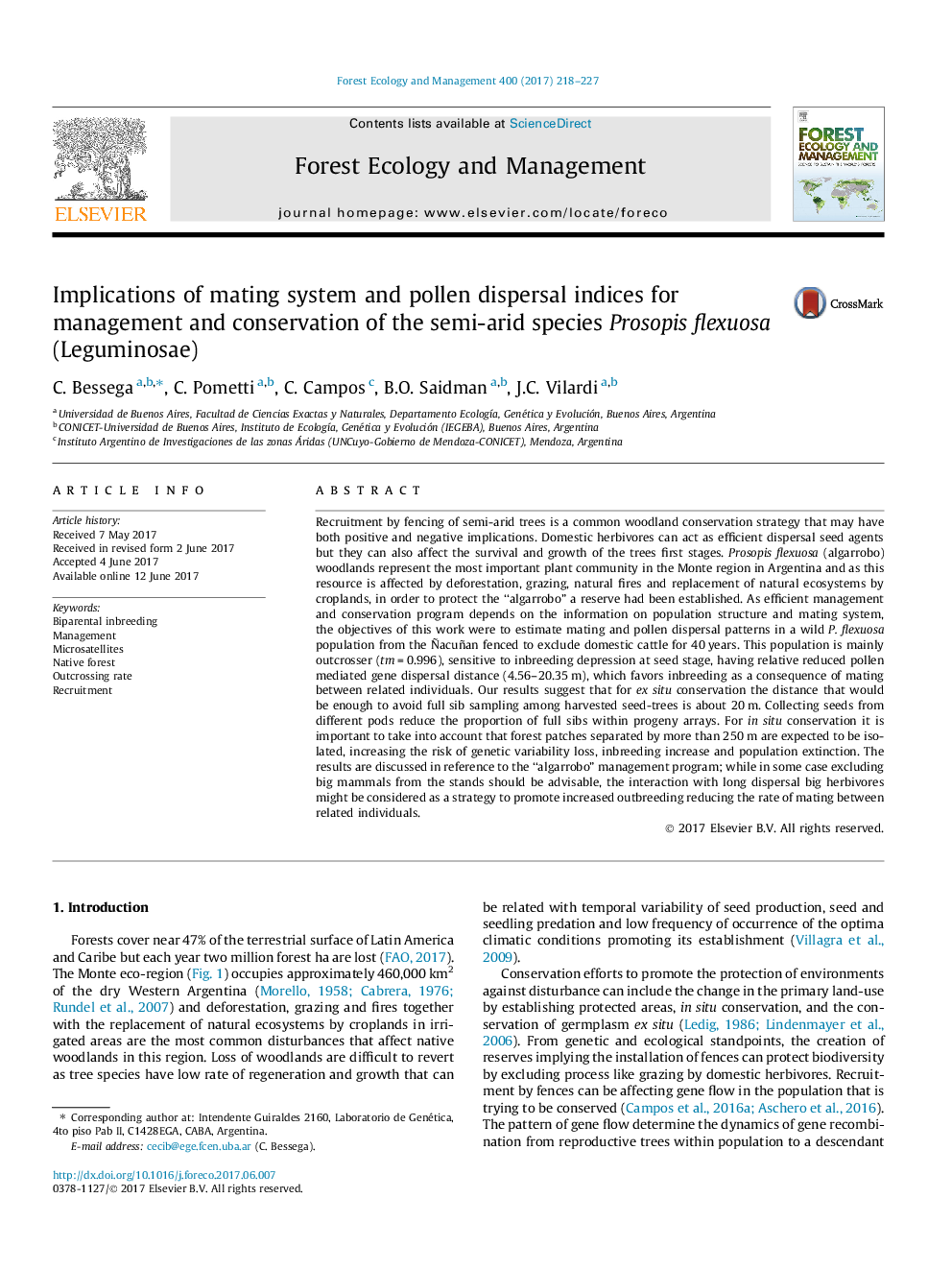| کد مقاله | کد نشریه | سال انتشار | مقاله انگلیسی | نسخه تمام متن |
|---|---|---|---|---|
| 6459233 | 1421358 | 2017 | 10 صفحه PDF | دانلود رایگان |

- This species exhibit limited pollen and seed dispersal.
- This species present a significant biparental inbreeding (20%) that result in unfit progeny.
- The SGS can be explained by the protection strategy based on fences.
- Fences as a management strategy affects biological mating system and genetic structure.
- Management programs should include genetic structure information.
Recruitment by fencing of semi-arid trees is a common woodland conservation strategy that may have both positive and negative implications. Domestic herbivores can act as efficient dispersal seed agents but they can also affect the survival and growth of the trees first stages. Prosopis flexuosa (algarrobo) woodlands represent the most important plant community in the Monte region in Argentina and as this resource is affected by deforestation, grazing, natural fires and replacement of natural ecosystems by croplands, in order to protect the “algarrobo” a reserve had been established. As efficient management and conservation program depends on the information on population structure and mating system, the objectives of this work were to estimate mating and pollen dispersal patterns in a wild P. flexuosa population from the Ãacuñan fenced to exclude domestic cattle for 40 years. This population is mainly outcrosser (tm = 0.996), sensitive to inbreeding depression at seed stage, having relative reduced pollen mediated gene dispersal distance (4.56-20.35 m), which favors inbreeding as a consequence of mating between related individuals. Our results suggest that for ex situ conservation the distance that would be enough to avoid full sib sampling among harvested seed-trees is about 20 m. Collecting seeds from different pods reduce the proportion of full sibs within progeny arrays. For in situ conservation it is important to take into account that forest patches separated by more than 250 m are expected to be isolated, increasing the risk of genetic variability loss, inbreeding increase and population extinction. The results are discussed in reference to the “algarrobo” management program; while in some case excluding big mammals from the stands should be advisable, the interaction with long dispersal big herbivores might be considered as a strategy to promote increased outbreeding reducing the rate of mating between related individuals.
Journal: Forest Ecology and Management - Volume 400, 15 September 2017, Pages 218-227